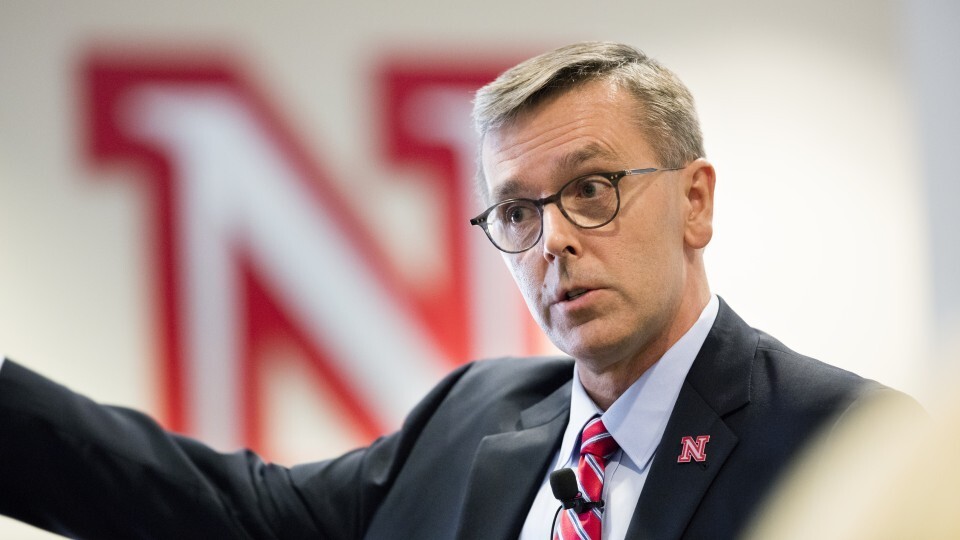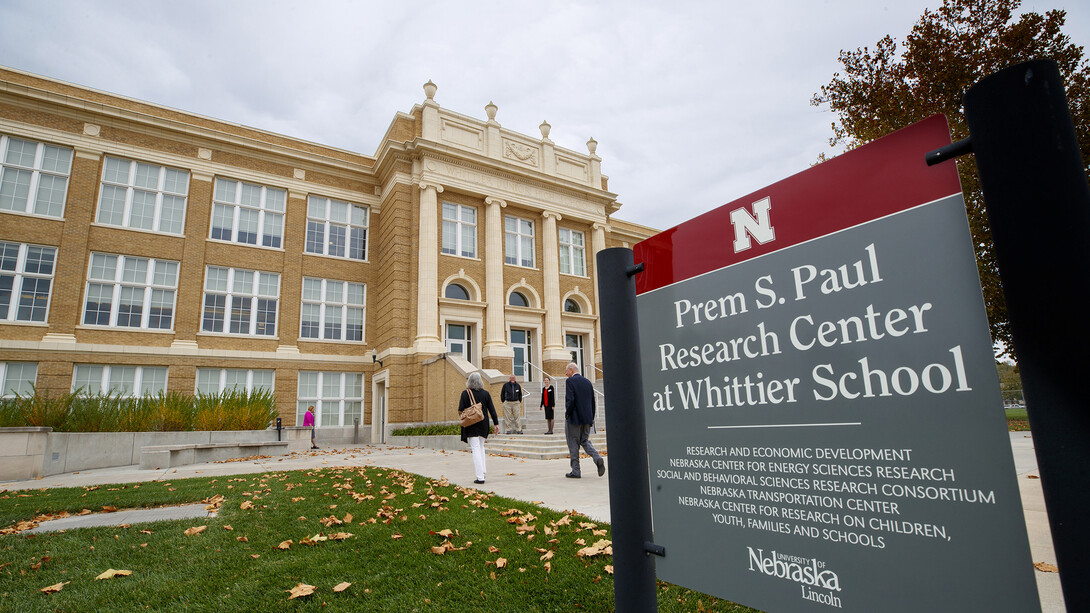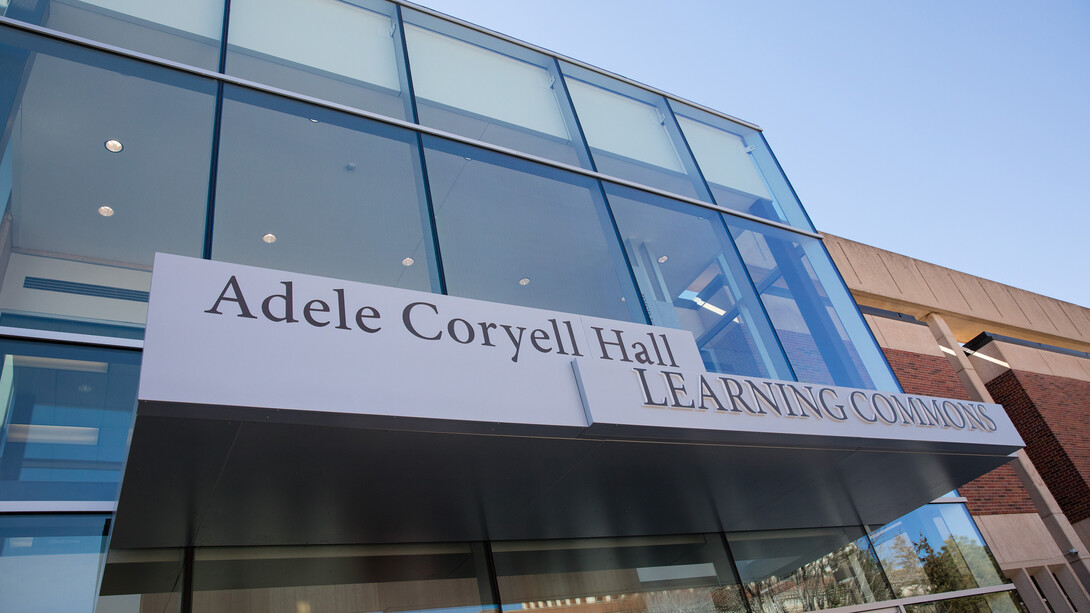
The year 2016 was pivotal for the University of Nebraska-Lincoln. As the university continued its momentum in research and scholarly activity, growth, programming and collaboration, new leadership charted a course toward new levels of excellence.
Here’s a look back on the year at Nebraska. Watch video of 2016 highlights
Leadership in transition. On April 6, Ronnie Green was named the university’s 20th chancellor, succeeding Harvey Perlman as the top leader at Nebraska. In May, Green stepped into the new role full-time, commencing a new era of leadership at the university for the first time in more than 15 years. The transition in leadership continued throughout 2016, as Lance Pérez was appointed interim dean of the College of Engineering; Sonia Feigenbaum was named associate vice chancellor for international engagement and global strategies; Teresa Paulsen joined the university as its chief communication and marketing officer; Katherine Ankerson was appointed to lead the College of Architecture; and Michael Boehm joined Nebraska as the new Harlan Vice Chancellor for IANR.
In September, a few days after retiring from his longtime position, vice chancellor for research and economic development Prem Paul passed away surrounded by family. Paul left behind a legacy of enthusiastic leadership in which he helped pilot the university to unprecedented levels of research growth and progress, a tenure that was reflected by the renaming of a research facility at Nebraska: The Prem S. Paul Research Center at Whittier School. Steve Goddard stepped into the interim vice-chancellor role upon Paul’s retirement.
In December, Green appointed Donde Plowman, dean of the College of Business Administration, to the role of executive vice chancellor, a newly configured administrative position that includes duties as the university’s chief academic officer.
Momentum, recognition and growth. Powered by a record freshman class, Nebraska’s enrollment surged to an all-time high of 25,897 in September – the second straight year of record enrollment at the university and a significant step toward its growth goals. Fall 2016’s student body was also the most diverse in the university’s history, and the university was nationally recognized for its 10-year excellence in African-American student graduation rates. Nebraska also remained highly ranked in U.S. News & World Report’s annual ratings, landing in the top half of the first tier of national universities and enjoying highly ranked programs throughout the year.
In July, the university was named a global “Rising Star” in research – Springer Nature, one of the world’s leading publishers of natural science research, tabbed Nebraska at No. 9 among U.S. institutions, No. 11 in North America and No. 90 among more than 8,000 worldwide research institutions. For the second straight year, the College of Law claimed the top ranking in quality and value among all U.S. law schools. The university also made significant strides in national “Best for Veterans” rankings and saw record participation in Education Abroad in 2016.
Five Nebraska faculty were among the most highly cited researchers in the world in the past year, while the American Association for the Advancement of Science named five university faculty as fellows.
Building to the future. The Adele Coryell Hall Learning Commons, a $10 million, 30,000-square-foot collaboration space, opened to fanfare in Love Library North in January. Work continued on the new $84 million College of Business Administration building throughout the year, with an eye on a 2017 opening. And crews broke ground on a new state-of-the-art University Health Center at 19th and S Streets that will enhance student quality of life while neighboring with the University of Nebraska Medical Center’s College of Nursing Lincoln Division next door.
Big awards, big projects. The university continued its upward trajectory in research in 2016, landing major grants and continuing to build its reputation for excellence in a wide variety of disciplines. In January, the university earned $6.5 million to shape the state’s early childhood practices and policies and to lead a national network committed to improving children’s outcomes. In June, Nebraska announced a five-year, $20 million award from the National Science Foundation’s EPSCoR to improve crop productivity. In August, Nebraska received an $11.3 million grant from the National Institutes of Health to establish a research center focused on investigating cellular level miscommunications that contribute to complex diseases such as cancer, diabetes and chronic liver disease. In September, the university took a leadership role in the multidisciplinary Nebraska Food for Health Center, a more than $40 million initiative to bring together strengths in agriculture and medicine within the University of Nebraska system.
The university also announced three endowed chairs that will serve as the foundation of the Clayton K. Yeutter Institute of International Trade and Finance, which will prepare students to work at a time when national economies are increasingly connected. In December, the Mid-America Transportation Center was tapped to lead a five-year, $13.75 million federal funded research center to improve transportation safety in Nebraska and neighboring states. And the Center on Children, Families and the Law landed a $15 million grant to help the public child welfare workforce.
“I could not be more excited about our opportunities ahead and how we grow the impact of the university,” Green said. “The best is yet to come.”











